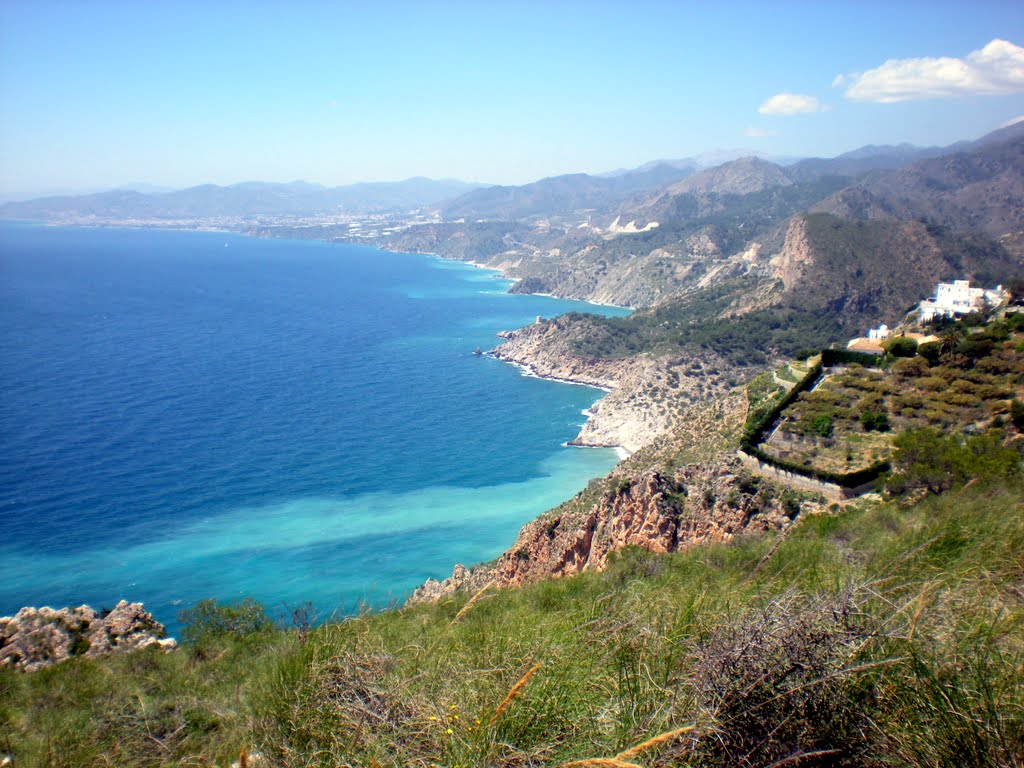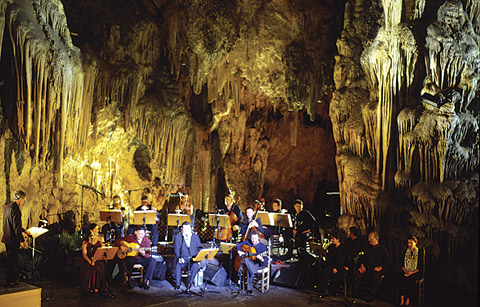Los Acantilados de Maro-Cerro Gordo
Los Acantilados de Maro-Cerro Gordo
Along the N340 located between Nerja and Almuñecar lies the conservation area Acantilados Los de Maro-Cerro Gordo. It is a somewhat pristine coastline that marks the transition from the Costa del Sol in the province of Malaga on to the Costa Tropical of Granada province. The coastline is characterized by beautiful bays and hidden beaches, including El Cañuelo.
The total area of nature including the part in the sea covers 1814.685 acres. and is characterized by steep cliffs up to 75 m. The area is of special ecological value by the geological formations and rich biodiversity. Two endangered plants can be found here: Limonium (see illustration) and Rosmarinus tomentosus malacitanum. It is not uncommon to see dolphins swim from the beach, or to meet nearby "wild animals" such as asibex, small wild boar, rare birds and chameleons. Despite this, the great diversity of plants and animals in this part of the sea is very special . You'll see lots of sponges, corals, anemones, shrimp, crab and lobster. This part of the sea is by the United Nations declared a specially protected area.



Nerja is located about 6 km from Playa del Cañuelo. It is a small, cozy tourist town, with some nice places to visit.
Nerja lies at the coast, about 50 km from Malaga and is situated on the eastern tip of the Costa del Sol in the Malaga province. It was formerly a small fishing village but now the municipality has more than 22,000 inhabitants.
The Balcon of Europ is located in the center of Nerja. It attracts many tourists, and also artists who are making money. It is a newly renovated promenade in the center of town with nice views along the coast. It was originally built around 1487 in place of a former ninth-century castle. From here you look out over the bays and beaches. On the sides are two old cannons, which indicate that the viewpoint was a fortress until 1812. The fort was demolished by the Spaniards because they were afraid it would fall into the hands of Napoleon.
On the Balcon de Europa is also a statue of King Alfonso XII. He would be the one who has given the name "Balcon de Europa"


The Caves of Nerja are a series of caves near the town of Nerja. The caves extend almost 5 km and belong to one of the main tourist attractions of Andalusia. The caves were discovered on January 12, 1959 by a group of cavers, who came from "La Mina". This is one of the two natural entrances to the cave. A third entrance was created in 1960 to provide an easy access for tourists. The cave is divided into two main parts known as Nerja I and II. Nerja I includes the Galleries Show, open to the public, with relatively easy access by stairs and concrete paths. Nerja II, which is not open to the public, consists of the upper gallery and was discovered in 1960. The new gallery was discovered in 1969.
One of the biggest celebrations take place in October, the four-day "feria" with fair, non stop eating, drinking and dancing in the streets. There is a carnival in February.